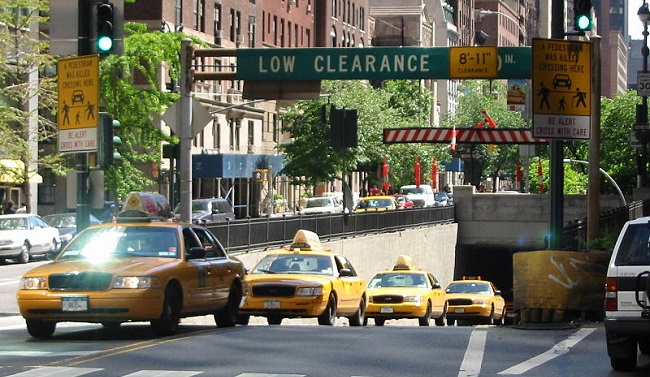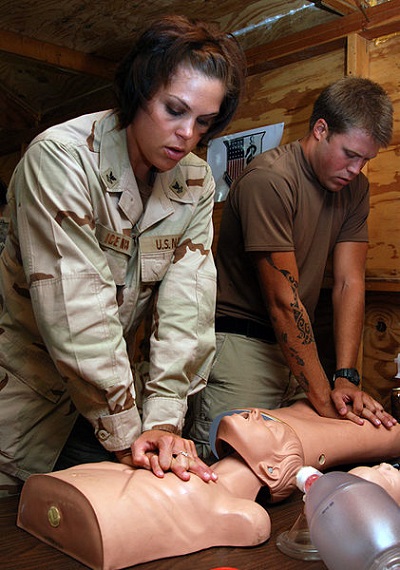The meters will start using GPS tech in order to boost their competition against Lyft and Uber.
A new pilot program is about to begin with the New York City Taxi and Limousine Commission in which it will be using geolocation technology within the fare meters in about 1,000 of its yellow cabs throughout the city.
The intention is also to take away the annoying “Taxi TVs” to replace them with a new type of payment system.
There are currently about 13,500 cabs in New York City that are reliant on a range of different devices that will track idle times and the number of times a wheel turns in order to help to calculate a fare. This system will be replaced in 1,000 of them as a part of a pilot program testing out geolocation technology based meters that will use GPS. In those cabs, the familiar red digits in the meters on the dashboards will be gone and a whole new system will have replaced them.
The length of the geolocation technology based meters is going to run for about a year and will be smaller than predicted.
 Initially, the plan had been to involve 4,000 cabs in the pilot, but that was reduced by a quarter. The cabs participating in this trial of the technology may also have a replacement of a number of other pieces of equipment including the TaxiTV, the credit card reader, the taximeter, and the vehicle location system, among other things. All of this will be replaced by a smartphone or tablet that will be used in order to calculate the fare as well as to collect the payment at the end of the trip.
Initially, the plan had been to involve 4,000 cabs in the pilot, but that was reduced by a quarter. The cabs participating in this trial of the technology may also have a replacement of a number of other pieces of equipment including the TaxiTV, the credit card reader, the taximeter, and the vehicle location system, among other things. All of this will be replaced by a smartphone or tablet that will be used in order to calculate the fare as well as to collect the payment at the end of the trip.
According to the commission’s chairperson, Meera Joshi, “Ultimately it is to create a more nimble system.” This pilot program has also been designed to help to upgrade the entire experience of taking a cab and is a direct response to the threat posed by app based ride share services such as Uber and Lyft.
There will be up to four companies that will be selected for participation in the geolocation technology using pilot program. Each of those companies will have the new mobile payment technology installed into 250 of its cabs.
The instructions have now been updated by the Red Cross and American Heart Association.
If most people were asked what to do in case of an emergency, the answer would be to dial 9-1-1, and while this should be easier than ever before with the penetration of mobile technology throughout virtually every part of the population, when someone suffers a heart attack, many people still freeze up and delay before this critical step is taken.
The CPR guidelines have now been updated so that mobile technology plays a part when it can.
More specifically, the American Heart Association and Red Cross have pointed out that mobile technology can allow bystanders to take part in helping out in the situation. The goal is to save more lives. According to the new guidelines, after 9-1-1 has been called, the phone can be used in its speaker function and rested down so that the individual can still speak to the operator, regardless of whether or not their hands are busy.
The goal is to use mobile technology to help to reduce some of the fear felt by people making the call.
 According to Dr. Lawrence Phillips from the American Heart Association, “Some of that fear is resolved when you hear a voice telling you what to do and what the next step is.” It also points out that the individual doesn’t actually need to be trained in CPR to be able to help out in an emergency situation in which someone has had a heart attack.
According to Dr. Lawrence Phillips from the American Heart Association, “Some of that fear is resolved when you hear a voice telling you what to do and what the next step is.” It also points out that the individual doesn’t actually need to be trained in CPR to be able to help out in an emergency situation in which someone has had a heart attack.
Some of the guidelines also point out that there are many mobile apps that can be used to help cardiac arrest victims so that assistance can begin as rapidly as possible. One example of a very beneficial way in which mobile devices can help when someone has gone into cardiac arrest is in the form of a non-profit called PulsePoint. That organization is currently in over 1,300 different communities.
It works when someone dials 9-1-1 for a situation that sounds like a cardiac emergency. When this happens, it alerts anyone nearby who has CPR training and who has the mobile app on their smartphone. This use of mobile technology can help to ensure that someone trained to provide CPR will be there as quickly as possible. Beginning CPR early can double or triple the chances of survival for someone who is suffering a heart attack. The app can also show people where the nearest automated external defibrillator can be found.
 Initially, the plan had been to involve 4,000 cabs in the pilot, but that was reduced by a quarter. The cabs participating in this trial of the technology may also have a replacement of a number of other pieces of equipment including the TaxiTV, the credit card reader, the taximeter, and the vehicle location system, among other things. All of this will be replaced by a smartphone or tablet that will be used in order to calculate the fare as well as to collect the payment at the end of the trip.
Initially, the plan had been to involve 4,000 cabs in the pilot, but that was reduced by a quarter. The cabs participating in this trial of the technology may also have a replacement of a number of other pieces of equipment including the TaxiTV, the credit card reader, the taximeter, and the vehicle location system, among other things. All of this will be replaced by a smartphone or tablet that will be used in order to calculate the fare as well as to collect the payment at the end of the trip.
 According to Dr. Lawrence Phillips from the American Heart Association, “Some of that fear is resolved when you hear a voice telling you what to do and what the next step is.” It also points out that the individual doesn’t actually need to be trained in CPR to be able to help out in an emergency situation in which someone has had a heart attack.
According to Dr. Lawrence Phillips from the American Heart Association, “Some of that fear is resolved when you hear a voice telling you what to do and what the next step is.” It also points out that the individual doesn’t actually need to be trained in CPR to be able to help out in an emergency situation in which someone has had a heart attack.